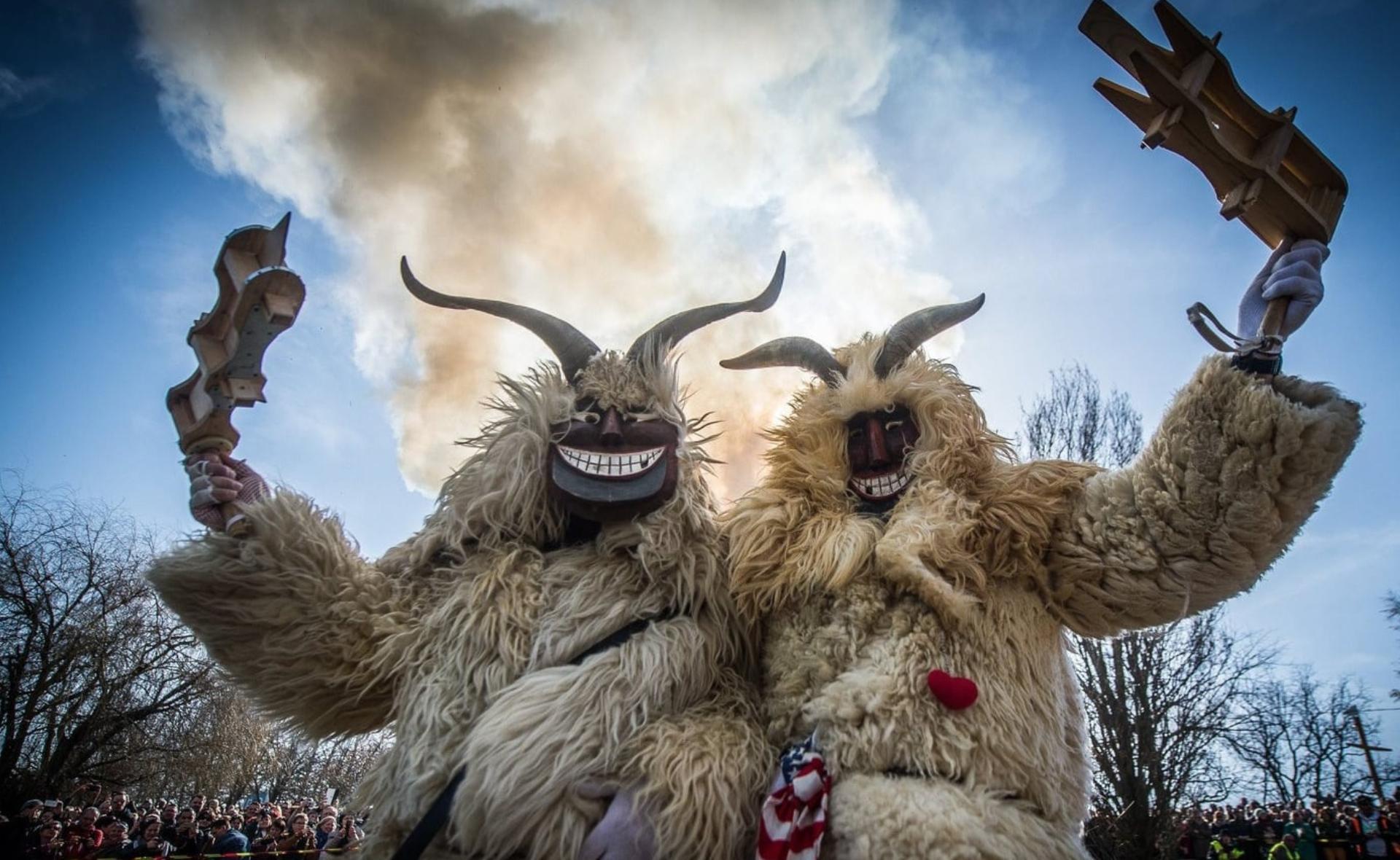Hungary is home to some of the most fascinating traditions in the world. One of these is our equivalent to Carnival season called „Farsang” which is in essence a combination of Christian traditions and pagan rituals. Historically, Farsang held a significant role in Hungarian culture, over time blending elements of pagan celebrations about expunging wintry demons from the world with more typical Christian elements. As a result, it’s a hodgepodge of festivities, beginning shortly after the New Year. The celebrations last over a month and were once typified by numerous grand feasts and copious drinking, largely in part due to the farmers of the land having a little more free time while the ground was frozen solid.
Nowadays it’s not quite the grand occasion it once was, but there are still a number of events to get involved with. Everything kicks off from the day of Epiphany, or 6 January, when the Christmas trees are traditionally thrown out. The length of the Farsang period is different each year. In 2024 Farsang is between January 6 and February 14. The most important part of Farsang is the “tail of Farsang”, meaning the last 3 days before the start of Lent.
Farsang traditions in Hungary
Farsang is traditionally for merrymaking and courting, and even weddings. Various folk traditions are related to making winter go away and spring come sooner. Dressing up as scary things and making noise is prevalent, as that is well known to ward off evil.
Internationally, one of the best-known Farsang-related traditions in Hungary is the “Busójárás” at the tail of Farsang, when people in fur coats and heavy wooden masks have a parade through the city making noise, lighting a bonfire at night. This tradition, however, is particular only to the region of Mohács, in the Southern part of Hungary, West of the Danube.
Another tradition at the tail of Farsang includes the burning of the “Kisze” doll, a human-sized doll made of straw that is paraded through the village and then burnt at a bonfire, getting rid of all things evil with it. In some regions the doll is buried in the snow or thrown in the river.
In cities, you will find costume or fancy-dress parties all over the place, especially at the tail of Farsang. Community centers will certainly have family days with music, arts-and-crafts-workshops, and face painting as well as costume parties. Already kindergartens have fancy-dress parties, and from primary school up, there are even contests where the best or most creative costumes may win small prizes.

Farsang and Lent
While Farsang is dedicated to having fun together, it is directly followed by Lent, a 40-day season for restraint and meditation. During Lent, you are not supposed to eat meat, or even cheese or eggs. This is supposed to clean your body and soul, and prepare you for the death and resurrection of Jesus Christ at Easter. As a result, the tail of Farsang is an especially cheerful season, as it is the last opportunity to have fun until Easter.
There is a special day emphasizing this contrast between Farsang and Lent: Fat Thursday. This is supposed to be the last Thursday before Lent, dedicated to eating together, especially rich foods and sweets.
In Hungary, however, Fat Thursday is in some regions considered the first Thursday after Lent has already started, so the first day after Ash Wednesday. This happens to let people eat the leftovers from the Farsang parties. This day also used to be popularized as a special event by Hungarian Tourism Inc., and participating restaurants were encouraged to offer significant discounts on their menus. The last such event took place in 2016, however, and over the last few years pandemic related restrictions interfered with it anyway.
Celebrate Farsang like a Hungarian!
Are you in Hungary in the Farsang period? Then try and check out Farsang-related events in your area. You can even go for a trip to visit a festival in the countryside, or the Busójárás in Mohács. This is a great opportunity for getting more familiar with Hungarian culture. Do you have any Hungarian ancestors? Then celebrating Farsang might be an especially fun way to learn more about the traditions of your ancestors.
Source: Helpers Hungary Citizenship Services
